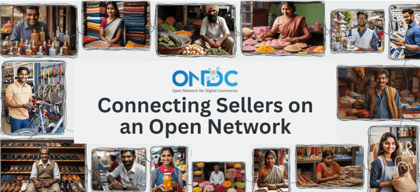A roadmap to ease your financial worries in this crisis starting this minute

Finance & Accounting
208 week ago — 7 min read
The Covid-19 pandemic has affected most businesses—large and small. If you need a financial roadmap for the current crisis read on.
I would categorise this roadmap in two parts:
- Business
- Personal finance
Life has a habit of changing the best laid plans. Like the French say, “Life is what happens while we are making plans”. The vaccine is nowhere in sight. As per scientists the vaccine may come in 1 year -18 months.
Now all of us owning or running businesses face certain critical challenges:
- Managing cash flow
- Retaining clients
- Growing business
- Sustaining operations profitably
- Paying taxes on time
- Managing relationships with banks
- Specific solutions or possibilities depends upon the business and the road to recovery - Working from home does not work for manufacturing/MSME businesses.
- In a situation like Covid clients/buyers are delaying payments, the banks have given the facility to pay interest after 3 months. A lot of entrepreneurial dreams can come crashing as interest would need to be paid.
Prudent businesses are built on cash flow and not projections. Plan for fixed expenses like rent, salaries, and certain contractual obligations like bank interest.
What needs to be done?
1. Understand cash flow in post-Covid situation
Prudent businesses are built on cash flow and not projections. Idea is to plan cash flow in hand as cash flows take time to materialise in business.
Plan for fixed expenses like rent, salaries, and certain contractual obligations like bank interest. The last element is more important in the current situation. Unless you are receiving funds in advance it does not make sense to borrow money and do business. Now we would say that would lead to a fall in margins. It is a better situation than having outstanding payments for more than a year. Having the money in hand also gives credibility as a buyer.
One of our clients in trading operates on this principle. It gives him peace of mind as well as keeps the business running smoothly. ‘Cash is king’ and that would give the holder of it immense peace in this current situation.
Manufacturing setups may need to consider situations wherein until a major part of the region opens up post lockdown it does not make business sense to look at starting production even if you have financial capacity to pay bank interest.
Personal capital may need to be dipped in this crisis. The revered J P Morgan was quipped to say in the early 1900s on a similar situation, “That is what reserves are for”.
Also read: 6 tips to improve the financial health of your business
2. Identify your key stakeholders
For trading businesses, it is their principals, for manufacturing their buyers and key suppliers. For service businesses it is clients/employees. It depends on what is most valuable to your business. It is important to reward your key personnel well especially in a service business as partners which are transitioning to a system run business.
Empathy for concerns of your key stakeholders is important in practice.
A long-term view will help in recovery faster.
All this is fine. I need to cut costs. Where do I start?
If you are a trading or manufacturing concern defining the opportunity to a select set of clients/suppliers is more critical. Timing cash flows with bank interest payments is extremely critical to take care of short term and long-term viability. The local grocer understands this well from experience. It needs to be based on advance payments. Everybody else is immaterial unless you have a longer-term benefit over some other issues. Maybe if the buyer is an important influencer then you may consider different terms, otherwise it is prudent not to do so.
In Service businesses it is about solution building through technology as it helps productivity. However, for discussions which are critical and last mile using technologies like Webex or Zoom could be useful in the current situation. This also takes care of reducing travelling expenses.
Also read: Manage your business and finances: Some practical tips
Most of the industries are not expecting great profits this year. What should I do in this situation?
Readjusting expectations is painful regardless of the business one is involved in. Having a sense of what is possible is a good point to start.
The first step is understanding where the profits of the business are likely to come from quarter wise.
Next two quarters are about stabilising cash flows and meeting expenses.
The next two after that may see marginal profits depending upon how prudent we have been in taking key decisions.
What about personal finances?
Since you are in business keep adding to the PPF as this is hard earned money which cannot be touched in the event of insolvency. This will take care of 80C issues.
As far as where to add addittional income is concerned, it can be added to:
- Arbitrage funds - The benefit is the tax treatment is similar to equity. This results in a post tax return of 6 - 6.5%.
- Liquid funds
- Fixed deposits in a well run private sector/public sector bank
- Equity funds or associated opportunities if the above are over 12 months of living expenses
What if I have only 3 months of living expenses and the rest is in business?
Strive to raise it to one year’s fixed expenses for personal needs as well as business. It is prudent to first get it to six months of fixed expenses and then get to one year of savings.
What about insurance?
About 10-20 lakhs worth of Mediclaim is a good spot to be in if you are in your thirties.
About 30-40 lakhs if you are in your mid-forties to sixty.
Is insurance of 10 lakh sufficient? Answer is that If it is a major disease and it involves a lot of post-operative care then even 30-40 lakhs may be insufficient if it is detected at a later stage.
How about term insurance?
This is insurance in its purest form. A totally no-frills option although nowadays many options are available in terms of benefits like accidental death rider.
If you have liabilities like a home loan, then a term plan is necessary. However, if you have your child's education that should factor in the amount of cover should things go wrong. If you are a single income family then it needs to factor in the amount for your family's lifestyle continuance if you are not around for at least a decade if not more.
Plan wisely. Revenue is vanity, profit is sanity.
Also read: 6 limiting financial beliefs that prevent SMEs from achieving business success
Image source: shutterstock.com
To explore business opportunities, link with me by clicking on the 'Invite' button on my eBiz Card.
Disclaimer: The views and opinions expressed in this article are those of the author and do not necessarily reflect the views, official policy or position of GlobalLinker.
Posted by
Anirudh Anand GuptaI am looking to connect with other business owners. Invite me to connect
View Anirudh 's profile
Other articles written by Anirudh Gupta
Annual Reflection on 4 Crucial Areas for Success
17 week ago
Most read this week
















Comments
Please login or Register to join the discussion